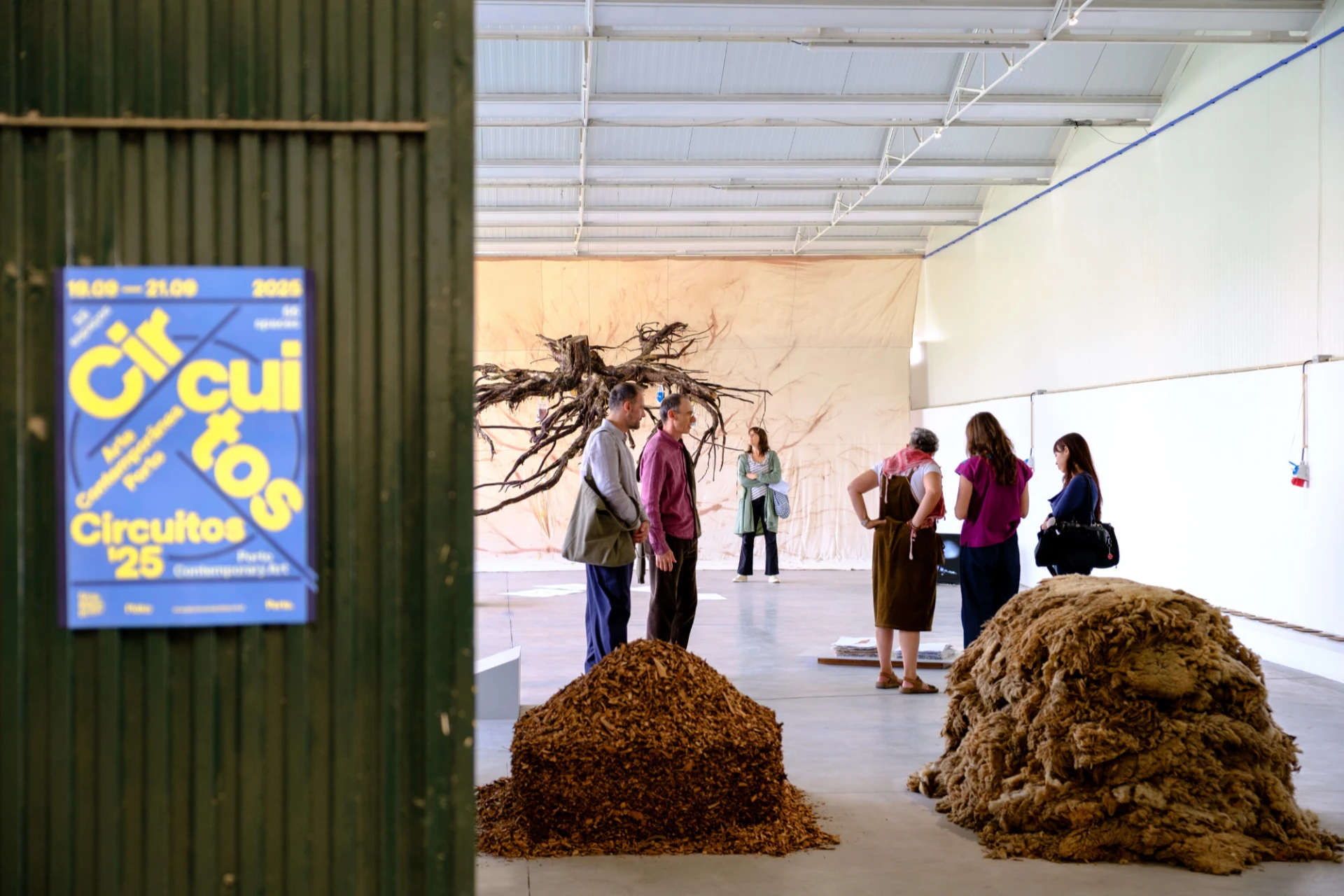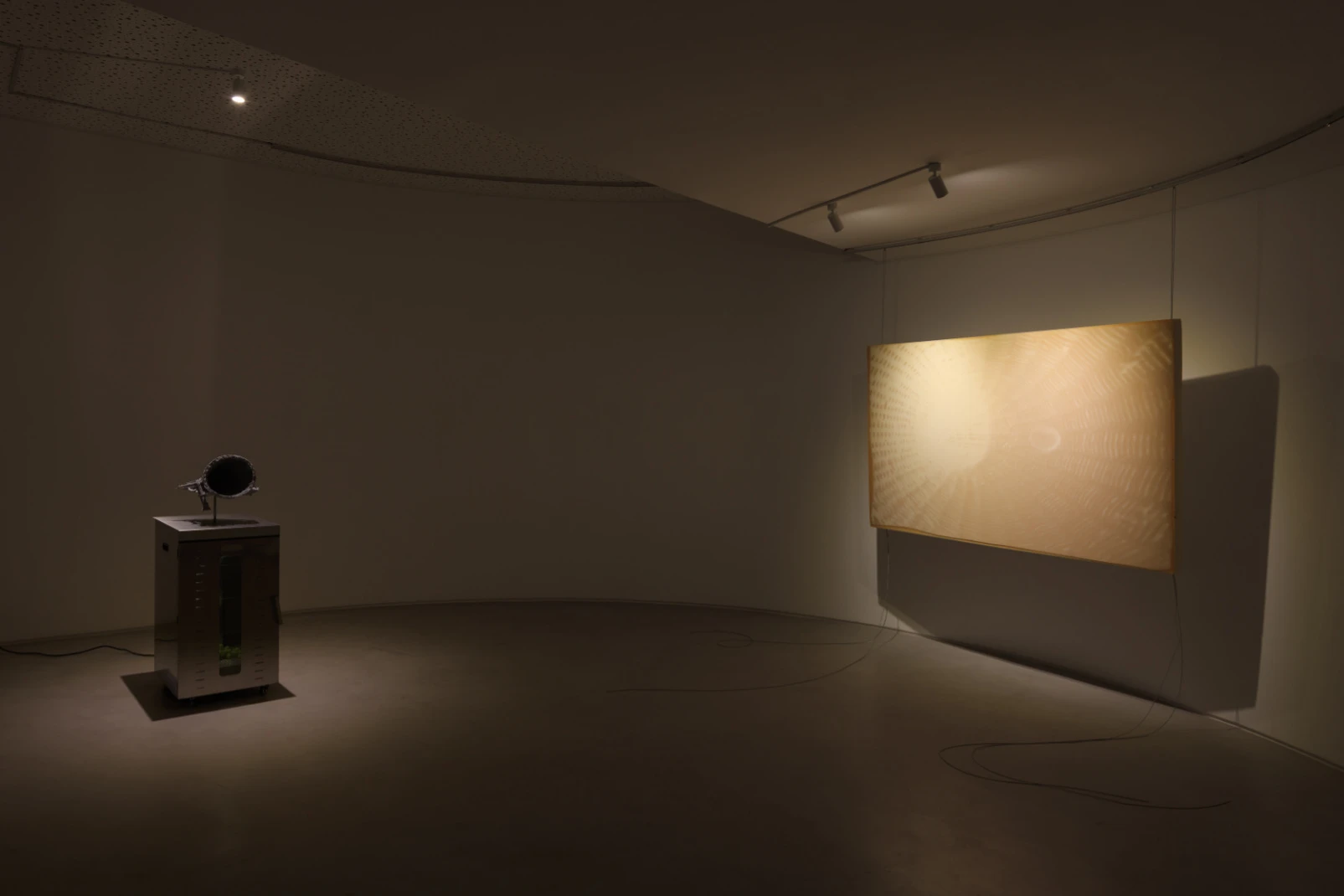article
Reservoir, by Gabriel Ribeiro
Reservoir, Gabriel Ribeiro's solo exhibition at Galeria Foco, condenses a series of layers. At the intersection between photography and sculpture, the artist investigates the transformation of matter, bringing to the surface the ability that certain compositions, substances and materials have to react to temperature, sunlight and time.
One day, while harvesting a large bunch of grapes, he presses it to his chest to hold it better, and the juice of the grapes flows, sweet and aromatic, through his eager hands. (...) A slight, winged intoxication takes hold of him, his blood beats faster in his enthusiastic heart, his energy multiplies.1
The passage from Gods of Olympus (1936) describes Dionysus' sensation when he encounters the transformation of matter, discovering the fermentation of grapes. The ecstasy that overwhelms him when he tastes the translucent juice that drips from the fruit makes me think of the epiphany of encounters and discoveries that occur during artistic processes and experiments. A kind of intoxication.
Reservoir, Gabriel Ribeiro's solo exhibition at Galeria Foco, condenses a series of layers. At the intersection between photography and sculpture, the artist investigates the transformation of matter, bringing to the surface the ability that certain compositions, substances and materials have to react to temperature, sunlight and time. The images are produced in the absence of conventional optical apparatus: photograms, cyanotypes, solar prints and processes in which light, heat and the passage of time become determining agents. Between two seconds and two months, this is the variation in exposure time of the photographic processes present in Reservoir.
Traces of a Dionysian gathering in Afters (2025) kick off the intoxicating circuit. In the installation, grapes and raisins are scattered on the floor. We see fallen glasses, bitten straws, and the dried outlines of spilled liquid manifest memories of an event, a scene made present in its absence. In Refill (2025), empty bottles refer to a source that has run dry and, through the cracks in the drinking fountain, a surprise. The work points to concepts and themes addressed during the exhibition, such as deflation and the idea of emptying - this movement in which the body succumbs, sinks into itself, dehydrates - and the presence, albeit marked by absence, of water and the way it is conducted.
On the pillar, a kind of hourglass refers to the passage of time: in Still Water, two bottles are connected by a metal clamp, while Urethra (2025) dialogues directly with what can be seen in the background. Conduit I and II are like X-rays, revealing the internal structure of objects. The approach to anatomy and the mysteries of the body's interior present a biomorphic logic in which body and world overlap. By relating human anatomy to infrastructure—what lies behind the walls of buildings, pipes, and filtration systems—Reservoir brings, in this understanding from the inside out, the flows that pass through our bodies and the flows that sustain buildings and cities.
In dialogue with the particularities of the space, a laboratory where the objects of study are reconfigured into different schemes highlights structural systems and puts us in touch with the idea of circulation. When we find the lift connecting the two floors closed, we see an almost imperceptible wire running through it, and it is only possible to know what sustains it on the floor below. I descend the stairs, drawn by the vibrant blue of Deflator (2025), the only cyanotype printed on cotton, enveloping in its weave. Next, very close to the floor, is Grape (2025), spinning slowly, in the rhythm of an expanded time.
Reservoir is divided into two moments. ‘As if the upper floor, with its high incidence of natural light, were a more reflective surface, the grape, and on the lower floor, under the lower ceiling and with reduced lighting, everything becomes denser and more opaque, like the raisin, resulting from the dehydration process,’ reveals the artist. Here, the bottle gives way to the basket, which weaves an ambiguity between containment and passage from its elementary structure, which is also a device for storing and transporting energy. Relationships between weight and lightness and light and shadow stand out in this second moment. I am reminded of Caravaggio's Bacchus (c. 1595), which seduces the viewer while the appearance of the no longer so fresh fruit in the basket in front of him reveals the action of time on matter. There is a self-portrait of Caravaggio hidden in this painting. There are also subtly hidden clues in Reservoir.
Horn of Plenty (2025) features the cornucopia — a symbol of abundance, often represented in art history with grapes, fruit and flowers — placed on an industrial dehydrator. The work contrasts the manipulation and control of matter with its organic and spontaneous behaviour of transmutation, tensioning notions of fullness and emptiness, integrity and decomposition. Finally, in Sun-maid I and II (2025) — solar prints on foam — the exhibition reaffirms the speculative threshold of Gabriel Ribeiro's investigation, which articulates the conscious and refined gesture with that which escapes control, that which is intuitive and unpredictable.
Reservoir is on display at Galeria Foco until 25 October 2025.
1 BARROS, João de. Deuses do Olimpo e Heróis da Grécia Antiga. Lisboa: Clássica, 1936.
ADVERTISING
Previous
agenda
-rbc39.jpg)
16 Oct 2025
Submissions open for the LOEWE FOUNDATION 2026 Craft Prize
By Umbigo
Next
article

17 Oct 2025
Circuitos´25
By Margarida Oliveira
Related Posts
